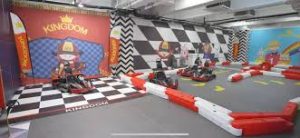Integrating Education with Play
One innovative approach to using playground equipment is to transform it into an educational tool. For instance, adding number and letter panels to climbing structures or incorporating puzzles and mazes on activity walls can turn playtime into learning time. According to studies, integrating educational elements into playgrounds can improve literacy and numeracy skills by up to 20% among preschoolers.
Promoting Fitness Through Challenge Courses
Playground equipment can be creatively adapted to promote physical fitness and wellness. Designing obstacle courses using existing equipment such as slides, monkey bars, and balance beams can create a fun and challenging fitness circuit for children. These setups encourage kids to engage in cardiovascular activities and strength training, which are essential for healthy development. Research shows that children who participate in playground-based fitness programs improve their overall physical fitness by approximately 30%.
Supporting Sensory Play
Enhancing playground equipment to support sensory play is another creative usage. Incorporating elements like water tables, sand pits, and textured paths can stimulate children's sensory skills and contribute to cognitive development. Sensory-rich playgrounds are particularly beneficial for children with developmental delays, as they provide tailored stimulation that can aid in their therapy. Data indicate that sensory play can accelerate developmental milestones in children with sensory integration issues by up to 40%.

Creating Community Art Spaces
Playground equipment can serve as a canvas for community expression. Encouraging local artists to decorate slides, climbing frames, and benches can transform a standard playground into a vibrant public art space. This not only beautifies the community but also fosters a sense of ownership and pride among residents. Community engagement projects involving playground art have been shown to increase local participation in public events and care for public spaces by up to 50%.
Developing Inclusive Play Areas
Utilizing playground equipment to create inclusive play areas that cater to children of all abilities is a profound way to use creativity for social good. Adding features like wheelchair-accessible swings, low-height activities for children with mobility challenges, and quiet zones for those with sensory sensitivities ensures that every child has the opportunity to play and interact with their peers. Surveys suggest that inclusive playgrounds increase the frequency of visits by families with special needs children by up to 75%.
Final Thoughts
The creative use of playground equipment can extend far beyond conventional play. By incorporating educational tools, fitness challenges, sensory experiences, community art, and inclusive design, playgrounds can enhance children's development, promote community engagement, and ensure inclusivity. These innovative approaches not only make playgrounds more interesting and engaging but also contribute to the overall well-being and growth of the community.